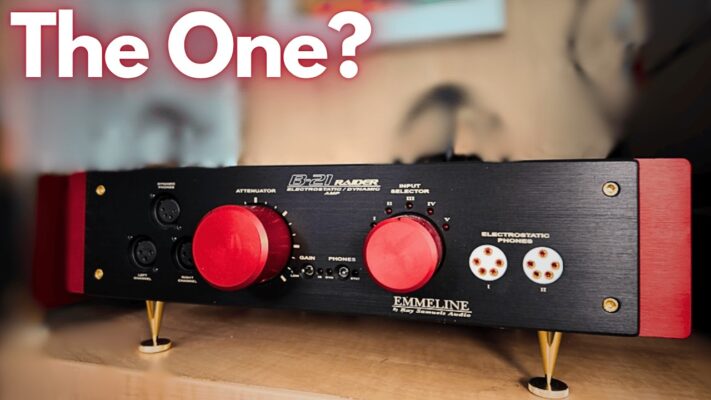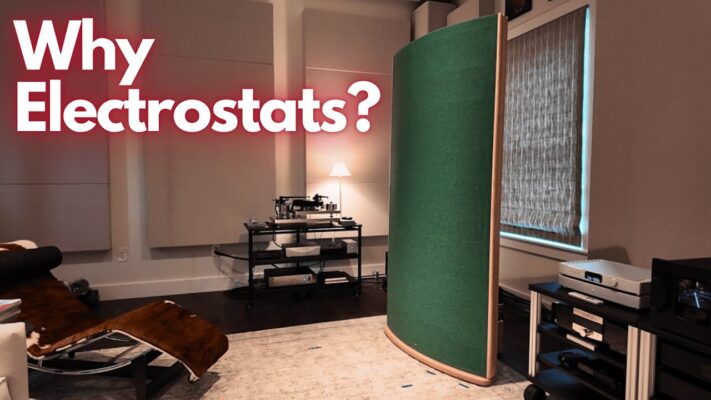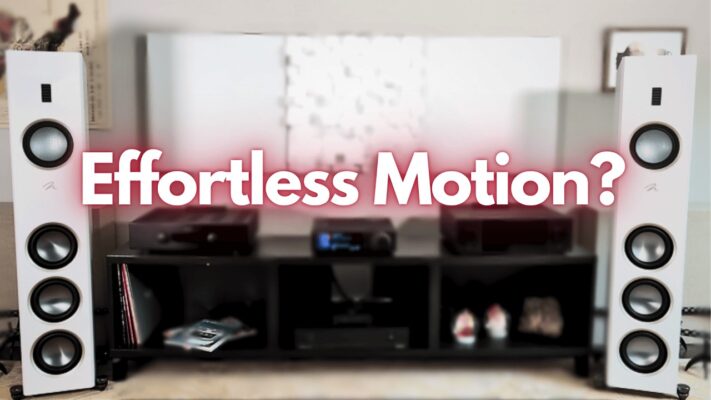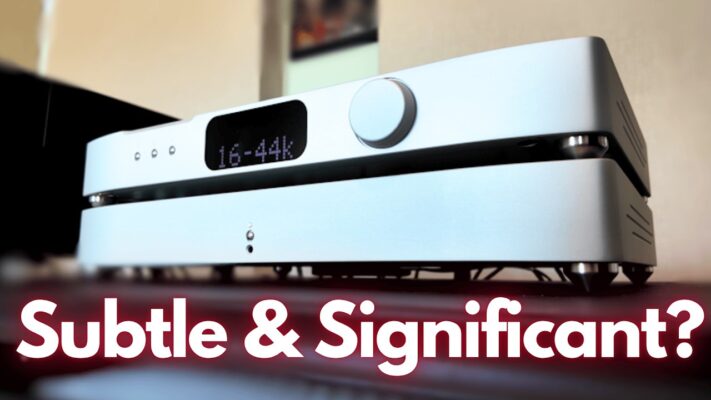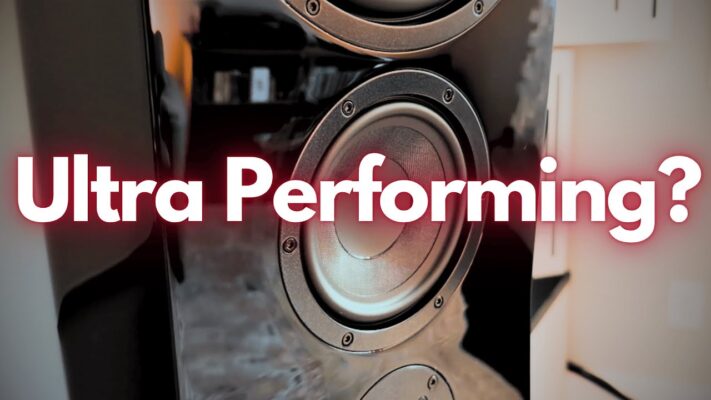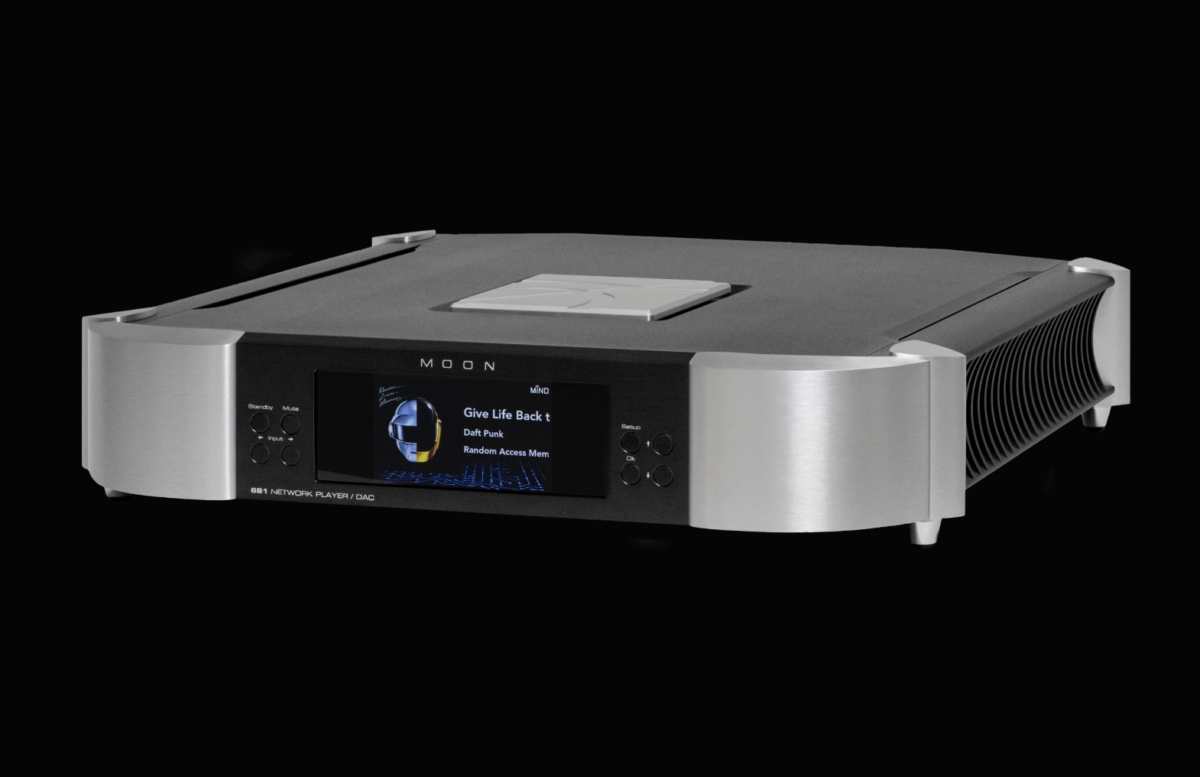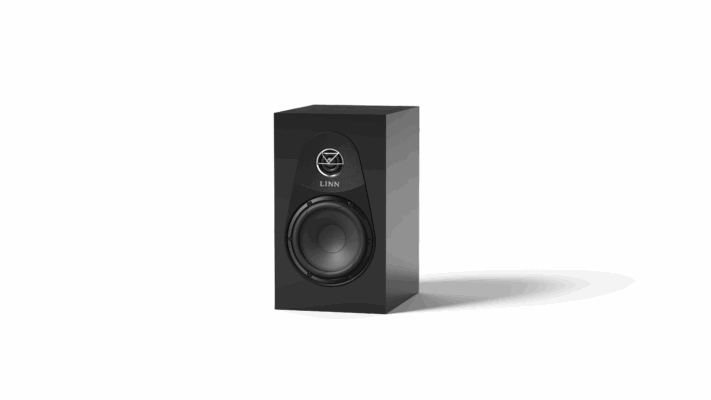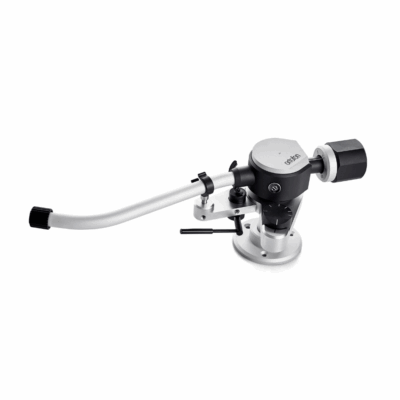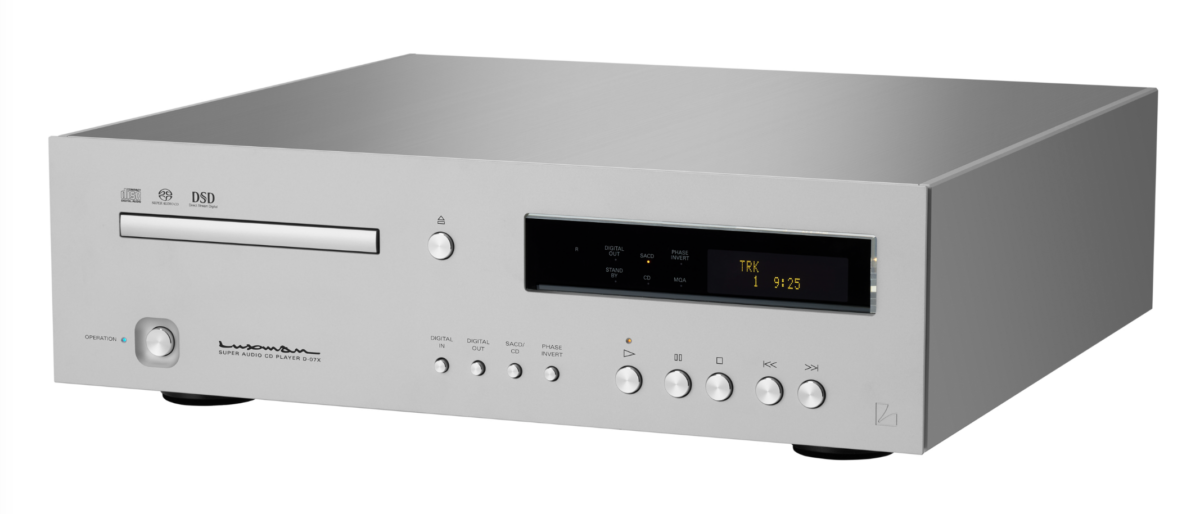Introduction
Today we’re diving deep into what might be the most tech-focused streaming DAC to date—the Eversolo DMP-A10. This isn’t just another incremental upgrade like we often see; this is Eversolo’s flagship statement piece that’s turning heads with its features and hardware. Priced at $3,999, the A10 looks to deliver reference-level performance through hardware, software, and connections.
I’ve been living with this unit for a couple of months now, and I can tell you—this is not your typical streaming DAC. If anything, I would say it’s more like a streaming supercomputer. From its dual-display design and sophisticated room correction capabilities to the hardware and connections that match up with nearly everything, the DMP-A10 represents a quantum leap forward for the brand.
Build Quality and Design
Let’s start with first impressions. This is Eversolo’s first truly full-sized component, measuring 17 inches wide, 12 inches deep, and roughly 5 inches tall—and the build quality is simply excellent. Gone are the compact dimensions of the A6 and A8; this one really looks and feels like a proper flagship component.
The CNC-machined aluminum chassis feels very solid, with beautiful heat sinks running along the sides that aren’t just for show—they provide crucial passive cooling for the sophisticated internals. The fit and finish is flawless, with tight tolerances and a premium feel that rivals components costing significantly more.
What caught me off guard when I first turned it on? Those dual displays. The main 6.5-inch touchscreen is centered in the front panel with vibrant colors and crisp graphics, while a secondary OLED display sits elegantly beside it within the volume knob. The primary screen might just seem like eye candy to some, but it’s actually functional and provides real-time information about your audio signal. Depending on the theme, it is very readable from across the room as well, which is often a complaint with screens. As a bonus, we of course get all the digital VU meters that some just can’t resist—the number of options to choose from keeps increasing as well through their frequent updates. I’ll get into how this screen performs a little later when I dig into the actual user experience with the platform.
I just can’t leave the build section without talking about the volume knob display for a second. I really think it’s genuinely neat—you can customize what it shows, and honestly, I haven’t seen anything like it from other brands. I like to highlight the little things or quirks from time to time that make products interesting. In some cases, the quirks work against the product; in this case, it’s a nice addition for the aesthetic.
Features and Connectivity
The DMP-A10 is essentially four products in one chassis: a streaming transport, a flagship DAC, a sophisticated DAC/streamer/preamp combo, and a digital room correction system. Let’s break down what makes each component special.
Connectivity is absolutely comprehensive. You get multiple digital inputs including Ethernet and dual-band wireless connectivity, USB, 2 optical, 2 coaxial, 2 sets of RCA, as well as balanced XLR. The outputs are equally impressive—both single-ended RCA and balanced XLR, coax, optical, USB, and one of the improvements over previous models: 2 subwoofer outputs.
This one is equipped with HDMI as well, with eARC support. I tested it with my C4 LG OLED TV and everything worked flawlessly. It’s a great product for integrating into a hybrid space with 2-channel audio as well as all forms of video media.
The unit is Roon Ready, supports UPnP and DLNA, and can handle virtually every streaming service you can think of: Tidal, Qobuz, Deezer, Apple Music, Hi-Res Audio, Paradise Radio, and one I want to highlight—Amazon Music. Amazon Music is missing on a lot of modern-day streamers but has been available for years with the Eversolo software suite.
The A10 includes two M.2 NVMe SSD slots underneath, allowing you to install up to 8TB of total internal storage. This transforms it into a complete music server, so I guess that makes it more like 5 products in one chassis.
But wait, there’s actually more. You get a fiber optic network connection—it’s not a common connection to see on streamers unless you start to shop the far ends of high-end audio. It’s in all reality a superior connection to Ethernet for noise isolation, transparency, and even reducing network latency. You need a bit of extra hardware for this one, but depending on your configuration, it might be worth looking into.
How about a little more yet? You can rip and play CDs using an external drive. If you utilize the SSD I mentioned earlier, you can store them right on the A10 itself.
Wrapping up the rear, we have trigger inputs and outputs that are a thoughtful touch for system integration, allowing the A10 to automatically power up your entire chain. Triggers are a must-have in my opinion on gear like this. When you have something like the A10 that can operate as the command center for your entire system, thoughtful integration and connections are key.
DAC Implementation
At the core of the DMP-A10 lies the ES9039PRO DAC chip rather than the two AKM DACs found in the smaller A8, but this isn’t just about the chip—it’s about the implementation. Eversolo has paired this with their proprietary EOS audio engine, which bypasses Android’s audio limitations to deliver bit-perfect playback. If you have preferences beyond the 9039, you can certainly utilize any of the A10’s digital outs to pass that digital conversion to your hardware preferences.
The power supply game is very strong: dual power supplies that are separate for both the digital and analog sections. This is the kind of design and performance-focused choice you see in much more expensive gear.
Clock precision is handled by an OCXO (Oven Controlled Crystal Oscillator). This maintains incredibly low jitter, ensuring consistent performance whether you’re listening for five minutes or five hours. Jitter is a term that comes up often around streamers. I just want to let it be known that in lesser-performing clocks, you can run into timing issues that can degrade the quality and rob the music of its lifelike presentation. Breaking it down into a simple definition would be the presence of an artificial sound. The clock in the A10 is top-tier and really gives you nothing to complain about.
The fully balanced signal path maintains the audio’s integrity from input to output, while the R2R analog volume control preserves dynamic range even at lower listening levels. This is proper reference-level engineering—it’s a step above digital controls and it’s certainly not just marketing.
Room Correction: A Game Changer
Here’s where the DMP-A10 truly separates itself from the competition. The included room correction system isn’t just a simple EQ—it’s a sophisticated acoustic calibration system that analyzes your listening environment.
The process is surprisingly simple for someone to go in and produce an admirable result in a few minutes’ time, but what I truly like is how you don’t need to stop there. You can go beyond the standard correction with various settings that can fine-tune your sound a step further.
In its most simple form, you can pair this up with your phone, do a volume test to make sure you’re within the right dB range, and simply run a room sweep and apply your corrections.
What I would suggest doing is using a calibrated mic like the UMIK here and uploading the calibration file over USB. Then you will run it again, measure the speakers independently or combined, and then go into the filter settings to fine-tune your targets, range, maximum gain, and target gain. This is one of those things where the A10 works for everyone—the person who wants a simple integration as well as those seeking much more flexibility in their sound profile. Keep in mind this isn’t going to replace room treatments, but it can be very effective for cleaning up a frequency chart as well as integrating subs. Don’t expect miracles in every room, but don’t be surprised if your bass sounds a bit tighter as well as having a more linear response across the lower frequency bands.
Parametric EQ: Precision Control
Beyond room correction, the DMP-A10 offers a 10-band parametric equalizer that gives you even more control over your sound. Each band offers adjustable frequency, Q factor, and gain, allowing you to fine-tune your system’s response. There is plenty to dive into here if you’re working outside of the automated correction. You get access to importing FIR filters from REW, high and low pass filters, loudness, compressor, delay, and balance. Should be plenty to keep you busy here if you want to go the manual route or even stack some of these on top of the automated results.
Sound Quality: Where It All Comes Together
But features mean nothing if the sound quality doesn’t deliver, and this is where the DMP-A10 really impressed me. The sonic signature is remarkably neutral and revealing, with a level of resolution that exposes details and precision. This isn’t just a streamer supercomputer—it really has the sound to back it all up.
Pairing the A10 with the Hegel H600 and PMC Prophecy 9 speakers, I found this setup to be very revealing in a way where you could pick up the small differences in recordings quite easily. There is a dead-quiet noise floor and separation that occasionally made me think, “Did I ever hear that before?” In this particular pairing, it can be quite analytical, which depending on who you ask and what you listen to can either work for you or against you. If you’re someone who favors a bit more of a warm or lush sound, it’s really not a concern—the DSP and filter capabilities really open you up to finding the right sound for your preferences.
Bass response is tight and controlled, with excellent definition in the lower octaves. The room correction is definitely helping here, ensuring that the bass response doesn’t blur the bottom end. Mid-range reproduction is where the A10 really excels—vocals have a natural, present quality that makes you feel like performers are sharing the space with you.
The high frequencies are extended and airy without any hint of harshness. Complex orchestral passages remain coherent even at high volumes, with each instrument maintaining its distinct character within the ensemble.
I also took the opportunity to pair the A10 with 2 sets of very capable powered speakers: the Buchardt Anniversary 10 as well as the Econik Six. Both of these use the same amplification and streaming platform—WiSA in this case over a Platin stereo hub. The WiSA actually works really well on these, but I wanted to see if I could get a bit more out of this configuration over a direct XLR connection through the A10. It didn’t disappoint with either model—the fine-tuning allowed me to dial these speakers into what I would call the next tier. If you have a powered speaker like these, it very much can be an upgrade in sound as well as convenience, utilizing the streaming platforms included as well as taking advantage of the sound tuning potential. I added an additional cable to a wireless setup, but it was worth it.
System Integration and User Experience
The user experience is where Eversolo has really thought things through. You can control everything—your music, streaming services, settings, and more—right from the front touchscreen or through their well-organized and frankly fast app. The main touchscreen interface is responsive and intuitive, featuring great colors, fast responses, and logical menu structures that make complex adjustments surprisingly straightforward. You can also set favorites, customize the home screen—lots of really nice options here for someone who wants either album art or track info that can be seen from across the room.
With the large center touchscreen paired with the smaller screen on the volume knob, you’ll have all the info you need right at a glance! The secondary display adds more at-a-glance information without cluttering the main interface and adds a touch of fun factor to the whole thing. Eversolo really nailed it with these screens, and I can’t stress that enough.
Innovative Screen Casting Feature
One unique but also in certain circumstances really useful feature is the ability to cast the screen from your A10 to your phone. The screencast feature pulls up a screen clone of what is on your A10’s touchscreen and functions just as if you were touching the screen itself. Where this might be most useful is with third-party apps. Since the third-party apps won’t be accessible on the Eversolo phone app, just mirror the screen, open third-party apps, and have complete control through your phone.
The Eversolo App Experience
The Eversolo app itself deserves special mention—it’s one of the better streaming apps available, with stable connections, intuitive navigation, and comprehensive yet simple-to-use feature access. It’s easy to navigate, allows you to sign in and stream your music from your favorite music platforms right in the app, and even has a universal music search feature to find songs across all of your streaming services.
I generally used the app as it functioned very well during testing and it’s the easiest way to access the massive amount of settings and configurations, but Eversolo does include a remote that is pretty nice and gives you some quick-change capabilities should you need it. I am always in favor of a remote on a product like this—we don’t always listen by ourselves, and unless we want to pass our phone around, it offers a great way for others to interact with the music.
Value Proposition and Competition
At $3,999, the DMP-A10 isn’t inexpensive, but consider what you’re getting: a reference-level DAC, sophisticated streaming capabilities, a high-end preamp, and professional-grade room correction—all in a single chassis. To replicate this functionality to this level of performance with separate components, you could easily spend multiples of this.
What’s particularly impressive is how Eversolo has managed to implement all these features without compromise. Lesser products often sacrifice sound quality for features, but the A10 maintains reference-level performance while offering unprecedented functionality.
Where I Feel This One Makes Sense
- You want the convenience of an all-in-one solution
- You’re the type of user who will actually use the DSP and room correction features
- You’re planning to integrate subwoofers, even better a pair of them
- You like having tons of connectivity options, for current and future system changes
Many people really want something that can grow with your system. Whether you’re building a new system or upgrading an existing one, the DMP-A10 fits the bill. It’s a rare product that manages to be both technologically advanced and musically satisfying. I was concerned with the amount of tech in this one if it was going to be plagued with bugs and broken features, but honestly this has been very refreshing and it appears their app support team keeps pushing it further with frequent updates as well.











